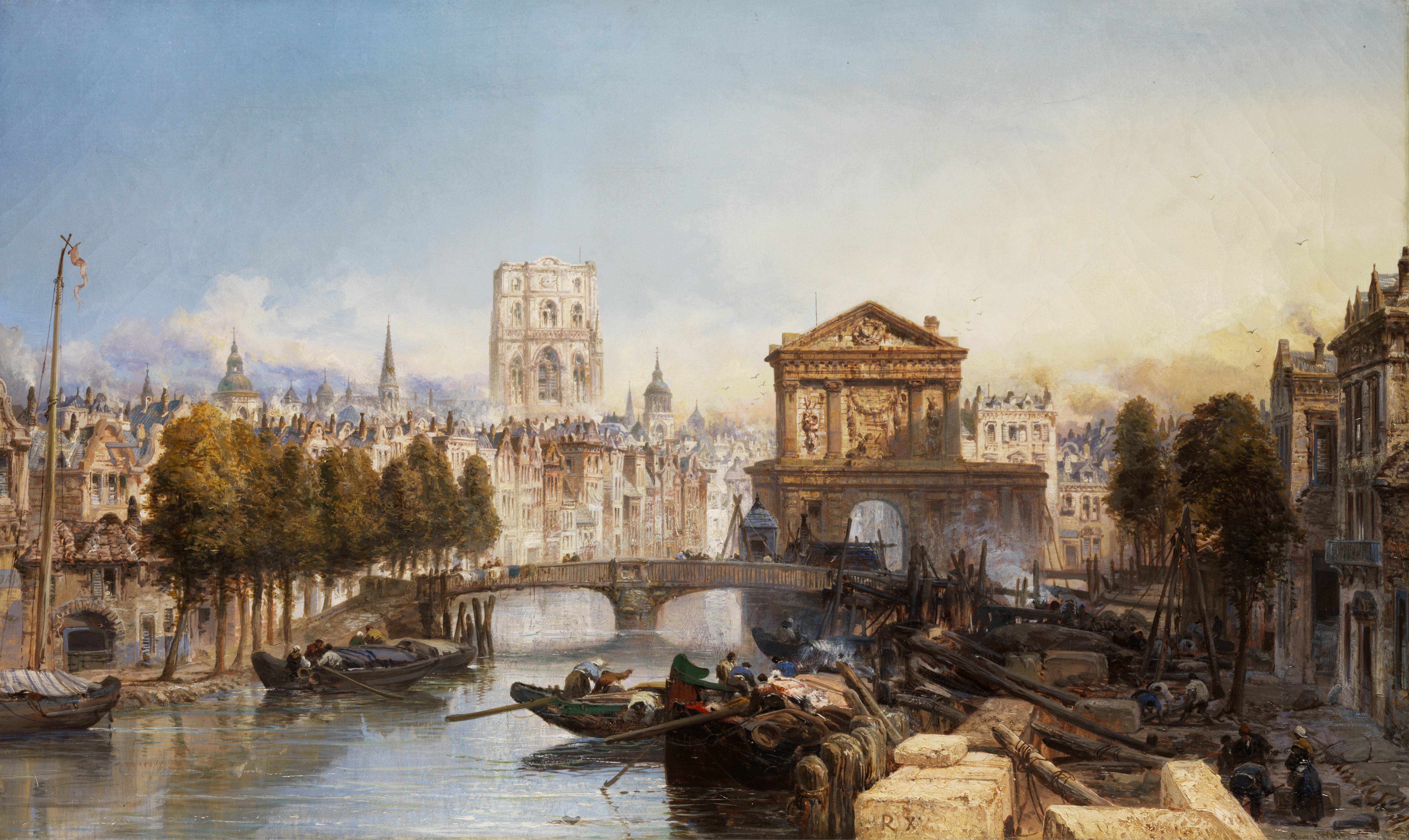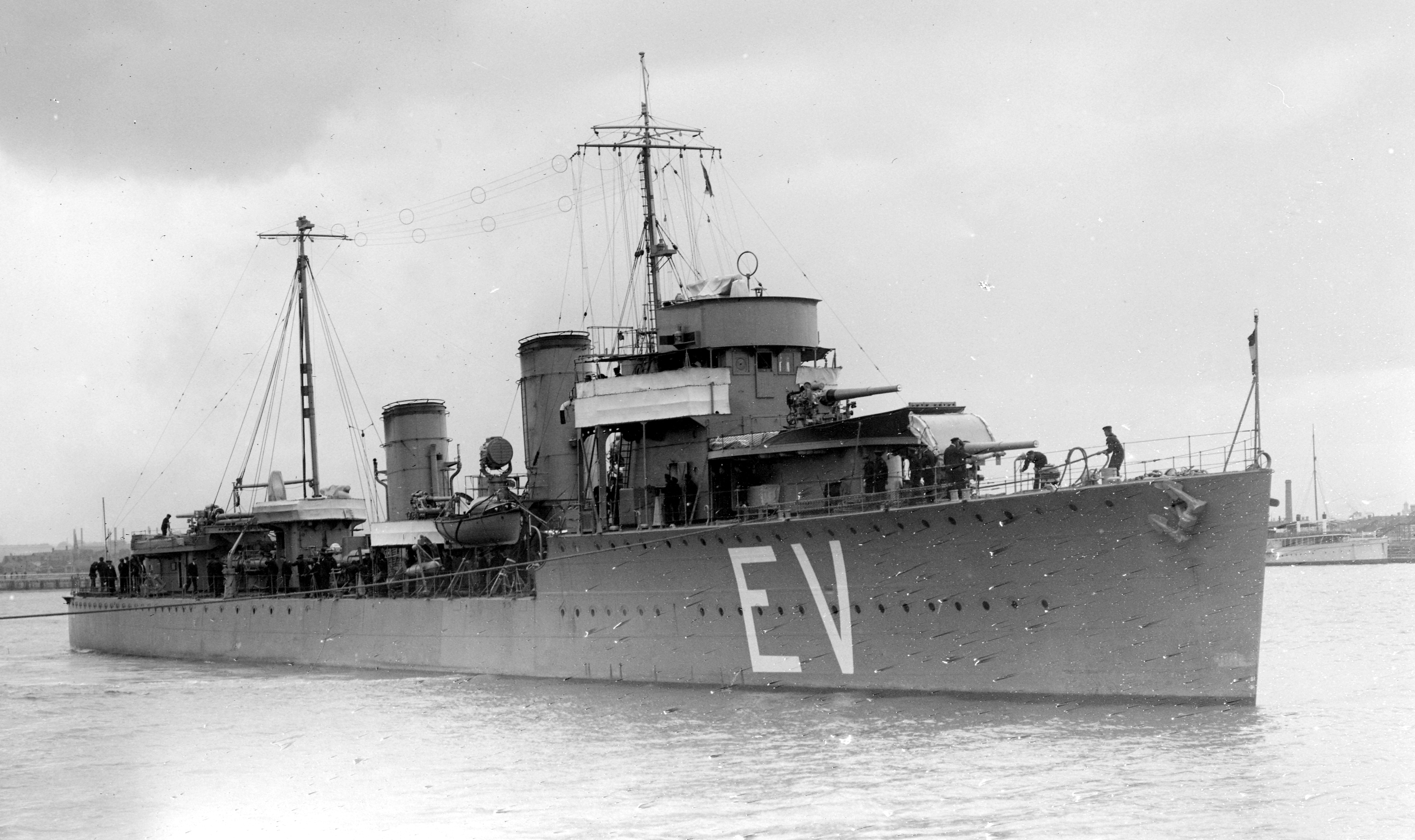|
Admiralen Class Destroyer
The Admiralen class were eight destroyers built for the Royal Netherlands Navy between 1926 and 1931. All ships fought in World War II and were scuttled or sunk. Design These ships were built in the Netherlands with assistance from the British company Yarrow (at that time the leading builder of destroyers in the world). The Dutch ships were based on the British destroyer . A novel feature was the provision of a seaplane for scouting. There was however no catapult, the plane being lowered into the sea by a crane. The differences between the two groups were minor; the second group was fitted for minesweeping rather than mine laying, and they carried one less gun for 30 tons of fuel. Design Between 1925 and 1928 eight new destroyers were laid down to replace the ''Wolf''-class destroyers. The design came from Yarrow & Co, they based it on HMS ''Ambuscade'' and HMS ''Amazon''. The Royal Netherlands Navy took the Yarrow & Co design and made some minor changes. The fir ... [...More Info...] [...Related Items...] OR: [Wikipedia] [Google] [Baidu] |
Destroyer
In naval terminology, a destroyer is a fast, manoeuvrable, long-endurance warship intended to escort larger vessels in a fleet, convoy or battle group and defend them against powerful short range attackers. They were originally developed in 1885 by Fernando Villaamil for the Spanish NavySmith, Charles Edgar: ''A short history of naval and marine engineering.'' Babcock & Wilcox, ltd. at the University Press, 1937, page 263 as a defense against torpedo boats, and by the time of the Russo-Japanese War in 1904, these "torpedo boat destroyers" (TBDs) were "large, swift, and powerfully armed torpedo boats designed to destroy other torpedo boats". Although the term "destroyer" had been used interchangeably with "TBD" and "torpedo boat destroyer" by navies since 1892, the term "torpedo boat destroyer" had been generally shortened to simply "destroyer" by nearly all navies by the First World War. Before World War II, destroyers were light vessels with little endurance for unattended o ... [...More Info...] [...Related Items...] OR: [Wikipedia] [Google] [Baidu] |
HMS Amazon (D39)
HMS ''Amazon'' was a prototype design of destroyer ordered for the Royal Navy in 1924. She was designed and built by J I Thornycroft, Thornycroft in response to an Admiralty request for a new design of destroyer incorporating the lessons and technological advances of the World War I, First World War. Their great rivals Yarrow Shipbuilders, Yarrow produced a similar, competitive design — that of . Design and construction Thornycroft evolved at least four separate designs for this ship, two being long (between perpendiculars) and two being long, with engine output varying from . Two final designs were offered to the Admiralty, who required prototypes for subsequent destroyer construction. Thornycroft's "A" design used the maximum length allowed (310 ft between perpendiculars). However, their "B" design—which was adopted—reduced the length by , using only a single boiler room forward (as in their wartime ''Wishart''). Two different designs for the machinery were prep ... [...More Info...] [...Related Items...] OR: [Wikipedia] [Google] [Baidu] |
Destroyer Classes
In naval terminology, a destroyer is a fast, manoeuvrable, long-endurance warship intended to escort larger vessels in a fleet, convoy or battle group and defend them against powerful short range attackers. They were originally developed in 1885 by Fernando Villaamil for the Spanish NavySmith, Charles Edgar: ''A short history of naval and marine engineering.'' Babcock & Wilcox, ltd. at the University Press, 1937, page 263 as a defense against torpedo boats, and by the time of the Russo-Japanese War in 1904, these "torpedo boat destroyers" (TBDs) were "large, swift, and powerfully armed torpedo boats designed to destroy other torpedo boats". Although the term "destroyer" had been used interchangeably with "TBD" and "torpedo boat destroyer" by navies since 1892, the term "torpedo boat destroyer" had been generally shortened to simply "destroyer" by nearly all navies by the First World War. Before World War II, destroyers were light vessels with little endurance for unattended o ... [...More Info...] [...Related Items...] OR: [Wikipedia] [Google] [Baidu] |
Surabaya
Surabaya ( jv, ꦱꦸꦫꦧꦪ or jv, ꦯꦹꦫꦨꦪ; ; ) is the capital city of the Provinces of Indonesia, Indonesian province of East Java and the List of Indonesian cities by population, second-largest city in Indonesia, after Jakarta. Located on the northeastern border of Java island, on the Madura Strait, it is one of the earliest port cities in Southeast Asia. According to the Government of Indonesia, National Development Planning Agency, Surabaya is one of the Regions of Indonesia#Development regions, four main central cities of Indonesia, alongside Jakarta, Medan, and Makassar. The city has a population of 2.87 million within its city limits at the 2020 census and 9.5 million in the extended Surabaya metropolitan area, making it the List of metropolitan areas in Indonesia, second-largest metropolitan area in Indonesia. The city was settled in the 10th century by the Janggala, Kingdom of Janggala, one of the two Javanese kingdoms that was formed in 1045 when ... [...More Info...] [...Related Items...] OR: [Wikipedia] [Google] [Baidu] |
Rotterdam Blitz
Rotterdam was subjected to heavy aerial bombardment by the ''Luftwaffe'' during the German invasion of the Netherlands in World War II. The objective was to support the German troops fighting in the city, break Dutch resistance and force the Dutch army to surrender. Bombing began at the outset of hostilities on 10 May and culminated with the destruction of the entire historic city centre on 14 May, an event sometimes referred to as the Rotterdam Blitz. According to an official list published in 2022 at least 1,150 people were killed (with 711 deaths in the 14 May bombing alone) and 85,000 more were left homeless. The psychological and physical success of the raid, from the German perspective, led the ''Oberkommando der Luftwaffe'' (OKL) to threaten to destroy the city of Utrecht if the Dutch command did not surrender. The Dutch surrendered in the late afternoon of 14 May, signing the capitulation early the next morning. Prelude The strategic location of the Netherlands between ... [...More Info...] [...Related Items...] OR: [Wikipedia] [Google] [Baidu] |
Battle Of Badung Strait
The Battle of Badung Strait was a naval battle of the Pacific campaign of World War II, fought on the night of 19/20 February 1942 in Badung Strait (not to be confused with the West Java city of Bandung) between the American-British-Dutch-Australian Command (ABDA) and the Imperial Japanese Navy. In the engagement, the four Japanese destroyers defeated an Allied force that outnumbered and outgunned them, sinking the Dutch destroyer and escorting two transports to safety. The battle demonstrated the Japanese Navy's considerable superiority over the Allies in night fighting which lasted until the Battle of Cape St. George. Background A battalion of the 48th Infantry Division of the Imperial Japanese Army landed on Bali on 18 February 1942. Dutch Admiral Karel Doorman's naval forces were scattered around Indonesia, but the invasion of Bali could not be ignored – it would give the Japanese an airbase within range of the ABDA naval base at Surabaya – so he sent in all ... [...More Info...] [...Related Items...] OR: [Wikipedia] [Google] [Baidu] |
Battle Of The Java Sea
The Battle of the Java Sea ( id, Pertempuran Laut Jawa, ja, スラバヤ沖海戦, Surabaya oki kaisen, Surabaya open-sea battle, Javanese : ꦥꦼꦫꦁꦱꦼꦒꦫꦗꦮ, romanized: ''Perang Segara Jawa'') was a decisive naval battle of the Pacific campaign of World War II. Allied navies suffered a disastrous defeat at the hand of the Imperial Japanese Navy, on 27 February 1942, and in secondary actions over successive days. The American-British-Dutch-Australian Command (ABDACOM) Strike Force commander— Dutch Rear-Admiral Karel Doorman—was killed. The aftermath of the battle included several smaller actions around Java, including the smaller but also significant Battle of Sunda Strait. These defeats led to Japanese occupation of the entire Dutch East Indies. Background The Japanese invasion of the Dutch East Indies progressed at a rapid pace as they advanced from their Palau Islands colony and captured bases in Sarawak and the southern Philippines. They seized ba ... [...More Info...] [...Related Items...] OR: [Wikipedia] [Google] [Baidu] |
Imperial Japanese Navy
The Imperial Japanese Navy (IJN; Kyūjitai: Shinjitai: ' 'Navy of the Greater Japanese Empire', or ''Nippon Kaigun'', 'Japanese Navy') was the navy of the Empire of Japan from 1868 to 1945, when it was dissolved following Japan's surrender in World War II. The Japan Maritime Self-Defense Force (JMSDF) was formed between 1952–1954 after the dissolution of the IJN. The Imperial Japanese Navy was the third largest navy in the world by 1920, behind the Royal Navy and the United States Navy (USN). It was supported by the Imperial Japanese Navy Air Service for aircraft and airstrike operation from the fleet. It was the primary opponent of the Western Allies in the Pacific War. The origins of the Imperial Japanese Navy go back to early interactions with nations on the Asian continent, beginning in the early medieval period and reaching a peak of activity during the 16th and 17th centuries at a time of cultural exchange with European powers during the Age of Discovery. After t ... [...More Info...] [...Related Items...] OR: [Wikipedia] [Google] [Baidu] |
Burgerhout
Burgerhout was a Dutch company in Rotterdam, active from 1852 to 1932. In 1865 it became a machine factory. In 1909 it started to build ships and in 1927 it branched out to the aircraft industry. Predecessors Burgerhout was preceded by the smithies of Kramer and Steigerwald. In 1772 Jan Kramer, smith and 'maker of spits' was mentioned in the Zwanesteeg at Leuvehaven Rotterdam. On 10 February 1818, smith Jan Kramer died at age 83. His daughter Cornelia Kramer, widow of J.H. Steigerwald then announced that her son J. Steigerwald would continue the business. On 22 January 1848 Jan Steigerwald died. His obituary held a note that the affairs would be provisionally continued 'in light of the size of the business inside and outside of the city'. In February 1848 there was an agreement that S. Bouwmeester and O. Grunzig would continue the company under the name ('firma') J. Steigerwald. At the time it produced anchors and made products for shipping, mills, households and carriages. It ... [...More Info...] [...Related Items...] OR: [Wikipedia] [Google] [Baidu] |
Admiral Karel Doorman
Karel Willem Frederik Marie Doorman (23 April 1889 – 28 February 1942) was a Dutch naval officer who during World War II commanded remnants of the short-lived American-British-Dutch-Australian Command naval strike forces in the Battle of the Java Sea. He was killed in action when his flagship was torpedoed during the battle, having chosen to go down with the ship. Biography Early career Doorman was born 1889 in Utrecht, Netherlands, and raised as a Roman Catholic from a military family. In 1906, he and his brother Lou ACM Doorman were commissioned as midshipmen. In 1910, he was promoted to officer and moved to the Dutch East Indies aboard the cruiser ''Tromp''. During his first three years of duty from January 1912 to December 1913, he was placed aboard the survey vessels and and was mainly tasked with mapping the coastal waters of New Guinea. Early in 1914, he returned to the Netherlands on board the cruiser . In March 1914, he requested a transfer to the Avia ... [...More Info...] [...Related Items...] OR: [Wikipedia] [Google] [Baidu] |
_2.jpg)

.jpg)



.jpg)